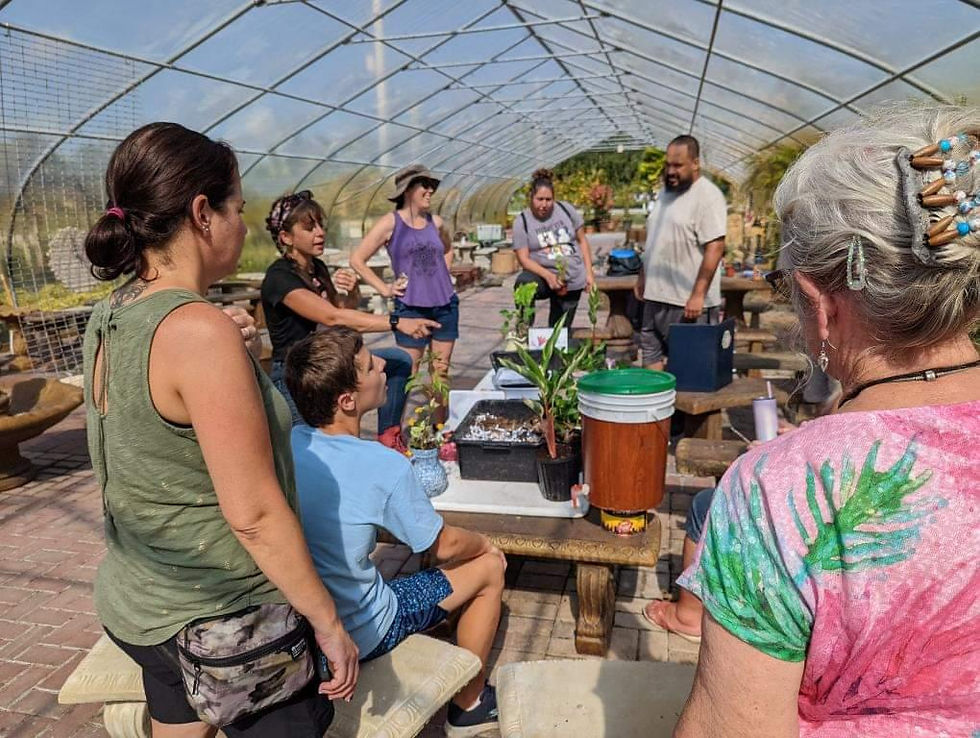Build-a-Bin Bucket Wormbin
- melissacorichi
- Dec 23, 2022
- 3 min read
Our Build-a-bin class has been one of my most popular workshops. Costing the same as one of our Bucket Wormbins, this class gives you exactly that-a fully functional bucket worm compost system, PLUS all the know how on how it's built and how to care for it. This class is great if you really want to get into worms but have had trouble understanding ALL the (contradicting sometimes) information out there.
The internet has an infinite amount of very useful information, it's where I got started learning to raise worms. But as you educate yourself it might became difficult to understand the nuances of things like, citrus, moisture levels, carbons, etc..

The Bucket Wormbin is a great bin to start your adventure into vermiculture (raising worms). This system works best for breeding, or increasing, your worm population. It's cozy habitat creates a safe environment for the worms, which allows their more amorous tendencies to come out. Composting worms are very social and will spend much of the time they aren't eating and pooping, breeding with their neighbors. This behavior makes it possible to nearly double their population every 4 to 6 weeks. That means after just a few months of worm rearing, you could divide your population up and start a whole new worm compost system. This is also a great way to be able to add worms to your garden while still having a healthy population for breeding at home in your worm bucket.
Another great feature of the Wormbin Bucket is that it is actually moveable. Worms are mostly water and like an environment that is VERY saturated. Most worm composts are too heavy to be moved once they are set up because of how heavy their muddy habitat must be. This wormbin can be picked up and moved around your home or garden until you find the right space even after it is fully saturated. Just keep it inside or outside away from full sun, any rain, and any loud of heavy vibrations.

The wormbin has the ability to keep up with about 2 persons plant based (unprocessed) waste. Worms are not good at processing oils and salts so it's best to just leave your uncooked scraps for the worms, and to compost or throw away your table scraps. Worms are 90% water and breathe through their skin. Oil can clog their ability to respirate and salt will affect their ability to regulate their hydration levels.
Another point we go over in class is Worm Tea. Many people assume that the liquid run-off that comes out of your wormbin is worm tea, but that is not true. Leachate, or the acidic by product of decomposition is what comes out of your wormbin. The spigot allows you to drain excess water out of your bin without disturbing your worms and their habitat. You can add water to this product and put it back into your bin or water your garden with it, however do not put it directly on leaves or roots of your plants. It is not a balanced or safe product and can harm your plants if used incorrectly. Worm Tea is a deliberately made product with finished and cured castings. It creates a pH neutral product that is safe to apply foliar and to roots.
You should considering joining the #squirmsquad and adopting some worms! It's a great way to decrease your carbon footprint and can really help you on your journey to a low impact or zero waste lifestyle. Wormbins make great gifts as do tickets to our Build-A-Bin workshop. Resolve to go green this year and start your worm farming journey with us!






























Comments